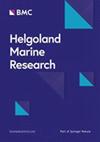方法研究十足甲壳类动物幼虫的器官发生。幼虫的饲养、准备和固定
4区 地球科学
Q2 Agricultural and Biological Sciences
引用次数: 7
摘要
几十年来,甲壳类动物幼虫一直是生态发育生物学(EcoDevo)领域的杰出模型,这是一门研究发育机制及其结果表型如何依赖于环境背景的学科。EcoDevo的一项当代研究旨在深入了解生物体的直接耐受性及其进化潜力,以适应由人为气候变化造成的不断变化的非生物和生物环境条件。因此,EcoDevo的观点对于理解和预测生物在不断变化的世界中的未来可能至关重要。许多十足甲壳类动物表现出复杂的生命周期,包括远洋幼虫,在许多亚群中,底栖幼年-成年阶段,因此在从幼虫到幼年阶段的过渡中发生了生态位转换。幼虫在孵化时就已经拥有了丰富的器官系统,其中许多器官系统也具有成年动物的特征,它们是在浮游生物中自主生存和发育所必需的,并且适合对环境驱动因素的波动做出适应性反应。它们还表现出丰富的行为能力,可以对光线、静水压力、潮流和温度等环境关键因素做出反应。细胞、组织和器官是幼虫生存的基础,随着幼虫的发育,它们的器官在大小和复杂性上不断增长。为了研究器官发育,研究人员需要一套最先进的方法来适应通常非常小的幼虫。本文综述了十足动物幼虫器官发生的研究方法。第一部分着重于幼虫的饲养、准备和固定,而第二部分描述了研究细胞、组织和器官的方法。本文章由计算机程序翻译,如有差异,请以英文原文为准。
Methods to study organogenesis in decapod crustacean larvae. I. larval rearing, preparation, and fixation
Crustacean larvae have served as distinguished models in the field of Ecological Developmental Biology (“EcoDevo”) for many decades, a discipline that examines how developmental mechanisms and their resulting phenotype depend on the environmental context. A contemporary line of research in EcoDevo aims at gaining insights into the immediate tolerance of organisms and their evolutionary potential to adapt to the changing abiotic and biotic environmental conditions created by anthropogenic climate change. Thus, an EcoDevo perspective may be critical to understand and predict the future of organisms in a changing world. Many decapod crustaceans display a complex life cycle that includes pelagic larvae and, in many subgroups, benthic juvenile–adult stages so that a niche shift occurs during the transition from the larval to the juvenile phase. Already at hatching, the larvae possess a wealth of organ systems, many of which also characterise the adult animals, necessary for autonomously surviving and developing in the plankton and suited to respond adaptively to fluctuations of environmental drivers. They also display a rich behavioural repertoire that allows for responses to environmental key factors such as light, hydrostatic pressure, tidal currents, and temperature. Cells, tissues, and organs are at the basis of larval survival, and as the larvae develop, their organs continue to grow in size and complexity. To study organ development, researchers need a suite of state-of-the-art methods adapted to the usually very small size of the larvae. This review and the companion paper set out to provide an overview of methods to study organogenesis in decapod larvae. This first section focuses on larval rearing, preparation, and fixation, whereas the second describes methods to study cells, tissues, and organs.
求助全文
通过发布文献求助,成功后即可免费获取论文全文。
去求助
来源期刊

Helgoland Marine Research
地学-海洋学
自引率
0.00%
发文量
0
审稿时长
6-12 weeks
期刊介绍:
Helgoland Marine Research is an open access, peer reviewed journal, publishing original research as well as reviews on all aspects of marine and brackish water ecosystems, with a focus on how organisms survive in, and interact with, their environment.
The aim of Helgoland Marine Research is to publish work with a regional focus, but with clear global implications, or vice versa; research with global emphasis and regional ramifications. We are particularly interested in contributions that further our general understanding of how marine ecosystems work, and that concentrate on species’ interactions.
 求助内容:
求助内容: 应助结果提醒方式:
应助结果提醒方式:


